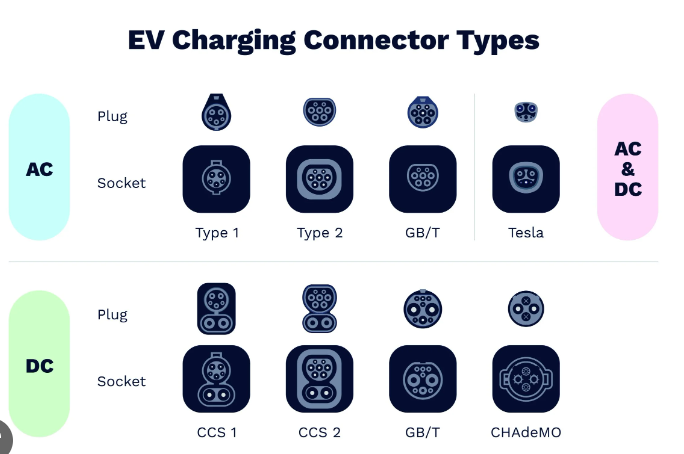As the world continues to shift towards sustainable energy, electric vehicles (EVs) are becoming increasingly popular. With more people turning to EVs as a viable option for transportation, the need for EV chargers has become more apparent than ever before.
Sichuan Weiyu Electric Co., Ltd. is a leading company in the research, development, and production of EV chargers. As a company that is committed to providing high-quality and innovative EV charging solutions, we understand that charging your EV in public can be a daunting task for new EV owners.
That’s why we’ve put together this ultimate guide to charging your EV in public. In this guide, we’ll cover everything you need to know about public EV charging, including types of EV chargers, how to find charging stations, how to use charging stations, and more.
Types of EV chargers
There are three types of EV chargers that you’ll typically find in public: Level 1, Level 2, and DC fast chargers.
Level 1 chargers are the slowest type of charger, but they’re also the most common. These chargers use a standard 120-volt household outlet and can provide up to 4 miles of range per hour of charging. This makes them a good option for overnight charging or for charging at work.
Level 2 chargers are faster than Level 1 chargers and are typically found in commercial and public settings. These chargers use a 240-volt circuit and can provide up to 25 miles of range per hour of charging. Level 2 chargers are a good option for charging while running errands or while on a road trip.
DC fast chargers are the fastest type of charger and can provide up to 350 miles of range per hour of charging. These chargers use a direct current (DC) to charge the battery quickly. DC fast chargers are typically found on major highways and in commercial areas, making them a good option for long road trips.
How to find charging stations
Finding charging stations can be a bit overwhelming at first, but there are several ways to make it easier. Here are some tips for finding charging stations:
1. Use an app: There are several apps available that can help you find charging stations in your area. Some popular apps include PlugShare, ChargePoint, and EVgo.
2. Check with your EV manufacturer: Your EV manufacturer may have an app or website that can help you find charging stations.
3. Ask your local utility company: Many utility companies are installing public charging stations, so it’s worth asking if they have any in your area.
4. Look for charging stations on major highways: If you’re planning a long road trip, it’s a good idea to look for charging stations along your route.
How to use charging stations
Using a charging station is generally pretty straightforward, but there are a few things to keep in mind:
1. Check the charging station: Before you plug in, check the charging station to make sure it’s in good condition and that it’s compatible with your EV.
2. Pay attention to the charging speed: Different chargers have different charging speeds, so make sure you’re aware of how long it will take to charge your vehicle.
3. Pay for charging: Some charging stations require payment, either through a subscription or by paying per charge. Make sure you have a payment method ready before you start charging.
4. Be mindful of others: If there are other EVs waiting to use the charging station, be mindful of how long you’re taking to charge and try to move your vehicle once it’s fully charged.
Tips for charging your EV in public
Charging your EV in public can be a bit of an adventure, but there are several things you can do to make the process smoother
1. Plan ahead: Before you head out, make sure you know where charging stations are located along your route. This can help you avoid running out of battery power and getting stranded.
2. Charge when you can: It’s a good idea to charge your EV whenever you have the opportunity, even if you don’t think you need it. This can help you avoid running out of power unexpectedly.
3. Be patient: EV charging can take longer than filling up a gas tank, so be patient and plan for longer stops when you’re on a road trip.
4. Consider investing in a home charger: Having a Level 2 charger installed at home can make it easier to keep your EV charged and avoid having to rely on public charging stations.
5. Be mindful of charging etiquette: When using a charging station, be considerate of other EV owners who may be waiting for a turn to charge.
6. Check charging station availability: It’s a good idea to check the availability of a charging station before you head out, as some charging stations may be occupied or out of service.
7. Know your EV’s charging capabilities: Make sure you’re aware of your EV’s charging capabilities, as some vehicles may not be compatible with certain types of charging stations.
In conclusion, as more and more people turn to electric vehicles, the need for public EV charging stations will continue to grow. By following the tips and advice in this ultimate guide to charging your EV in public, you can make the charging process more efficient and enjoyable. As a leading company in the EV charging industry, Sichuan Weiyu Electric Co., Ltd. is committed to providing high-quality and innovative EV charging solutions to help make EV ownership more accessible and convenient for everyone.
Post time: Mar-06-2023








